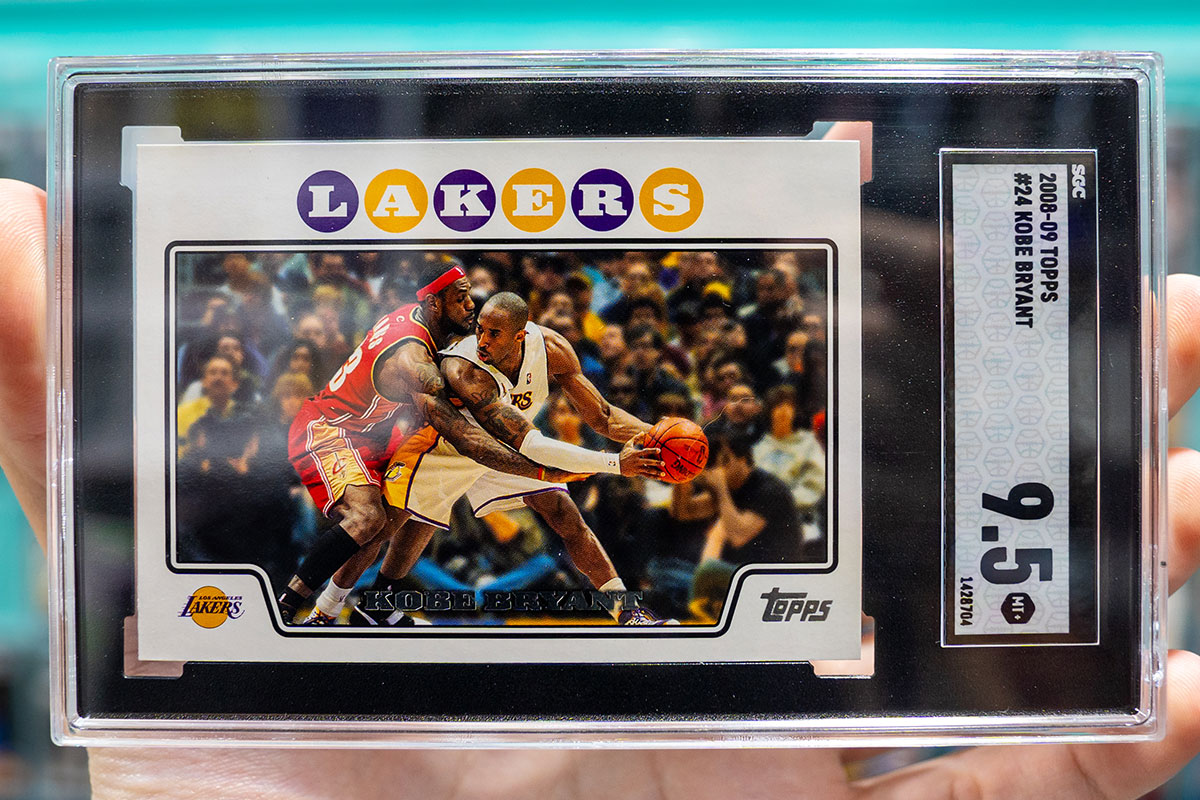SGC Grading Costs and How to Submit Your Cards
Many vintage collectors already grade with SGC, but new, lower grading costs now appeal to modern collectors.
SGC is one of the top three authentication and grading companies in the sports and trading card industry. Although the company is known for its expertise with vintage sports cards, many more collectors are increasingly turning to SGC. No up-charges and the low SGC grading cost now make them a popular option for modern sports card collectors.
Who is SGC?
SGC (Sportscard Guaranty Corporation) was formed in 1998 and has established itself as a reliable and affordable authentication and grading company. The most expensive sports card ever sold was graded by SGC. A 1952 Topps Mickey Mantle card, graded as a 9.5 Mint+ by SGC, sold for a record-shattering $12.6 million in 2022.
How Much Does SGC Grading Cost?
The most appealing part of SGC grading is the price. SGC grading costs $15 for all modern (manufactured from 2000 to present) cards. Additionally, SGC will never up-charge a modern card based on its declared value. This eliminates the headache you’ll find with other grading companies, where a card valued at $3,000 costs $300 to get graded with PSA. SGC’s grading cost for the same card? $15.
As they try to entice Pokémon and other TCG collectors, SGC is now offering $9 grading for all TCG cards. This includes Pokémon, Yu-Gi-Oh, Magic the Gathering, and more.
How Long Does SGC Grading Take?
SGC’s standard grading service, the $15 level for all sports cards and $9 for TCG cards, have an estimated turnaround time of 5 to 10 business days. This is a much faster turnaround than other companies. For example, PSA’s cheapest grading option costs $25 per card with an estimated turnaround time of 65 days. The same service level costs less and comes back faster with SGC.
For collectors looking for a quicker service, SGC also offers an immediate, 1 to 2 business day turnaround. The SGC grading cost for this immediate service is $40 per card.
Understanding the SGC Grading Process and Standards
SGC’s professional graders use a unique approach to grading. Like other companies, they offer a single grade (1-10) based on the overall condition of a card. There are two different “SGC 10” grades a card can receive: Gem or Pristine. According to SGC’s grading standards listed on their website, these are the differences between an SGC 10 Gem and SGC 10 Pristine card:
- 10 Gem: 55/45 or better centering, sharp focus, four sharp corners, free of stains, no breaks in surface gloss, no print or refractor lines, and no visible wear. A slight print spot visible under close scrutiny is allowable if it does not detract from the aesthetics of the card.
- 10 Pristine: A “virtually flawless” card. 50/50 centering, crisp focus, four sharp corners, free of stains, no breaks in surface gloss, no print or refractor lines, and no visible wear under magnification.
SGC will also encapsulate cards that are authentic but technically imperfect or altered in some way. Other grading companies usually will not encapsulate such cards, but SGC does so with “Authentic” on the label in place of a numeric grade. They also include the reason for an authentic-only grade: altered, color added, evidence of trimming, or miscut. Not only is SGC’s added transparency a positive thing but also allows for the encapsulation of truly authentic cards than other companies will not grade. This added flexibility for authentic cards will appeal to vintage collectors.
Submitting Cards for Grading with SGC
Collectors can submit cards for grading with SGC on their website or in the mobile app. For each card you’re submitting, you’ll need to enter the basic details and estimated value of the card. Once you’ve entered this information for all the cards in your submission, you can continue the submission process by selecting your preferred shipping method and payment options.
The next step is arguably the most important: safely package and ship your cards. You should place all cards in a penny sleeve before putting it in a semi-rigid card saver. Then, place your cards in between two slightly larger pieces of cardboard and use rubber bands to secure the stack of cards. Last, secure your cards in a box with bubble wrap or similar packing materials to ensure your cards don’t move around in the box.
SGC Grading Costs for Shipping
You can use any method of shipping to send your cards to SGC grading but using insurance with your shipment is highly recommended. There are additional SGC grading costs for return shipping once your grading is complete. You can find those prices on SGC’s website.
Click here to learn more about SGC grading.




